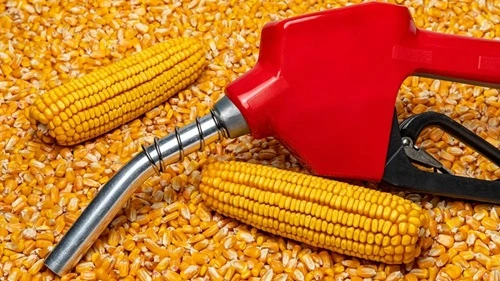Ethanol is more than just a word you might have heard in chemistry class or seen listed on a gasoline pump. This versatile biofuel has a rich history and plays a significant role in today’s energy landscape, especially in the United States. From powering the first automobiles to being a key ingredient in hand sanitizers, ethanol’s applications are both fascinating and wide-ranging. Let’s dive into over ten fun and intriguing facts about ethanol that highlight its importance and versatility.

1. Ethanol Is a Renewable Biofuel
Ethanol is produced through the fermentation of sugars found in plants like corn, sugarcane, and wheat. In the United States, corn is the primary source of ethanol production. Since it’s derived from plants that can be replanted annually, ethanol is considered a renewable fuel, helping reduce dependence on finite fossil fuel resources.
2. The United States Is the World’s Largest Ethanol Producer
As of 2023, the United States holds the title for the world’s largest ethanol producer, accounting for over 50% of global production. The U.S. ethanol industry not only supports energy independence but also contributes significantly to the economy by creating jobs in agriculture, manufacturing, and transportation sectors.
3. Ethanol-Powered Vehicles Date Back to the Model T
Henry Ford’s Model T, one of the first mass-produced automobiles, was originally designed to run on ethanol. Ford envisioned ethanol, which he called “farm alcohol,” as a fuel for the future. He believed that it would empower farmers and create a sustainable fuel source. Today, flexible-fuel vehicles (FFVs) can run on gasoline-ethanol blends up to 85% ethanol (E85), continuing Ford’s early vision.
4. Ethanol Blends Are Common at the Gas Pump
If you’ve ever noticed fuel labeled E10, E15, or E85 at the gas station, you’re looking at ethanol-gasoline blends. E10, which contains 10% ethanol, is standard across the U.S. and is approved for use in all gasoline-powered vehicles. These blends help reduce greenhouse gas emissions and improve engine performance due to ethanol’s higher octane rating.
5. Ethanol Has a High Octane Rating
Ethanol has an octane rating of about 113, significantly higher than regular gasoline, which averages around 87. A higher octane rating means better engine performance and efficiency, as it allows for higher compression ratios without causing engine knocking. This property makes ethanol an attractive additive for improving fuel quality.
6. Ethanol Burns Cleaner Than Gasoline
When ethanol combusts, it produces fewer harmful emissions compared to pure gasoline. It emits less carbon monoxide, particulate matter, and toxic air pollutants. This cleaner burn helps reduce smog formation and improves overall air quality, contributing to environmental and public health benefits.
7. The “Corn Belt” Is the Heart of Ethanol Production
The Midwestern United States, known as the “Corn Belt,” is the epicenter of ethanol production in the country. States like Iowa, Nebraska, and Illinois lead the way due to their abundant corn crops. The ethanol industry boosts local economies by providing jobs and increasing demand for corn, benefiting farmers and related industries.
8. Ethanol Is Used in More Than Just Fuel
Beyond fueling cars, ethanol is a common ingredient in many household products. It’s used in the production of personal care items like perfumes, lotions, and deodorants due to its properties as a solvent and preservative. Ethanol is also the key active ingredient in hand sanitizers, especially significant during the COVID-19 pandemic when demand for sanitizing products skyrocketed.
9. Ethanol Can Be Made from Non-Food Sources
Advancements in technology have led to the development of cellulosic ethanol, produced from non-food plant materials like agricultural residues, grasses, and wood chips. This second-generation biofuel reduces the competition between fuel and food crops, addressing concerns about using edible resources for fuel production.
10. Ethanol Production Has Become More Energy Efficient
Modern ethanol production has seen significant improvements in energy efficiency. According to recent studies, the energy balance of ethanol (the ratio of energy produced to energy used in production) has improved, with some estimates showing that for every unit of energy used to produce ethanol, approximately 2 to 2.3 units of energy are generated. This positive energy balance enhances ethanol’s viability as a sustainable fuel option.
11. Ethanol’s Role in Racing
Ethanol isn’t just for everyday vehicles; it’s also used in professional racing. The IndyCar Series, one of the premier auto racing leagues in the United States, uses a blend containing 85% ethanol. The high octane and cleaner-burning properties of ethanol provide the performance needed for high-speed racing while reducing emissions.
12. Ethanol and the Environment: A Mixed Debate
While ethanol offers environmental benefits by reducing greenhouse gas emissions, it’s also part of ongoing debates regarding land use and water consumption. Ethanol production requires significant agricultural land and water resources, leading to discussions about the sustainability of large-scale ethanol use. Efforts are underway to mitigate these impacts through better farming practices and the development of cellulosic ethanol.
13. Ethanol Production Generates Valuable Co-Products
The production of ethanol from corn yields more than just fuel. One of the primary co-products is Distillers Grains with Solubles (DGS), a high-protein animal feed used in livestock farming. This adds value to the ethanol production process and supports the agricultural economy by providing additional revenue streams for producers.
14. Ethanol in Aviation Fuel
Research is being conducted on the use of ethanol in aviation fuel as part of the industry’s efforts to reduce carbon emissions. While challenges remain due to energy density and freezing point considerations, ethanol-based biofuels could play a role in making air travel more sustainable in the future.
15. Historical Use of Ethanol as a Fuel
Ethanol has a long history as a fuel source. In the 1850s, it was used as a lamp fuel until it was taxed during the Civil War, making it less competitive compared to other fuels like kerosene. The tax was repealed in 1906, but by then, petroleum-based fuels had become dominant. Ethanol saw a resurgence during fuel shortages in World War II and again during the oil crises of the 1970s.
16. Ethanol Is the Same Alcohol Found in Beverages
Ethanol used as fuel is chemically identical to the alcohol found in beer, wine, and spirits. However, fuel ethanol is denatured by adding toxic substances to make it unfit for human consumption. This distinction is crucial for safety and regulatory purposes.
17. The Flex-Fuel Vehicle Market Is Growing
Flexible-fuel vehicles (FFVs) are designed to run on gasoline or gasoline-ethanol blends up to E85. As of 2023, there are over 21 million FFVs on U.S. roads. The growth of FFVs supports greater consumer choice and the potential for increased ethanol use, contributing to energy diversification.
18. Ethanol Production Supports Energy Independence
By producing ethanol domestically, the United States reduces its reliance on imported oil. This energy independence enhances national security, stabilizes fuel prices, and supports the domestic economy through job creation and investment in rural communities.
19. Educational Opportunities in Ethanol Research
Universities across the United States are actively involved in ethanol research, exploring ways to make production more efficient and sustainable. Students and researchers are working on innovative technologies like genetic modification of microorganisms for better fermentation and the use of algae as a feedstock, opening new career paths in renewable energy sectors.
20. Ethanol Has a Lower Energy Content Than Gasoline
One interesting fact is that ethanol contains about 33% less energy per gallon than gasoline. This means that vehicles may experience a slight reduction in fuel economy when running on higher ethanol blends like E85. However, advancements in engine technology are aiming to optimize performance and efficiency when using ethanol-blended fuels.
Conclusion
Ethanol is a multifaceted biofuel with a rich history and significant impact on the United States’ energy landscape. From its early days powering the Model T to its modern role in reducing emissions and supporting rural economies, ethanol continues to be a vital part of America’s journey toward sustainable energy solutions. Its versatility extends beyond fuel, playing a role in everyday products and even in the hand sanitizers that have become essential in recent times.
As we look to the future, ongoing research and technological advancements promise to enhance the efficiency and sustainability of ethanol production. Whether it’s through the development of cellulosic ethanol or the exploration of new applications, ethanol remains at the forefront of renewable energy discussions.



